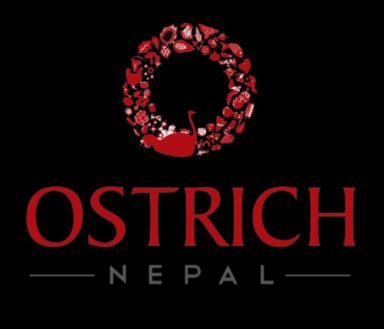Hatching success and chick mortality of the ostrich (Struthio camelus) in a commercial farm in Nepal
Commercial ostrich farming for trading meat and feathers is relatively new in Nepal. This study investigated hatching success and chick mortality rates in the only commercial ostrich farm in Nepal- Ostrich Nepal Pvt. Ltd,
Rupandehi, Lumbini Province, Nepal. The number of eggs laid, hatched and their mortality were observed from 2014 to 2020. Results revealed higher embryonic deaths than hatching percentage, however, chick’s mortality rate was comparatively lesser. Breeding population required more nutritional diet to ensure fertile eggs.
Hatchability was affected by temperature, humidity and turning of eggs. Microbial contamination and infertility were the major contributors for embryonic death. Intense care is required for the young chicks as they are very vulnerable to heat, rain and infections. Nutrition, and proper temperature and humidity management are major aspects to foster the growth and development as well as to ensure better reproductive ability of ostriches in order to lower mortality and avoid economic loss.
Initiated six years ago in Gangoliya, Rupandehi, with 1,500 eggs imported from Australia,
Ostrich Nepal has expanded to Dang.
The company currently has 4,000 birds. Ostrich Nepal has opened three new farms over the last year—Gangoliya (22 bighas) and Suryapura (70 bighas) of Rupandehi, and Dang (162 bighas). Besides meat, it also produces eggs and chiks.
The company, which has invested a total of Rs 1 billion, has offered direct employment to 62 individuals, while around 500 have got indirect employment opportunity.
Ostrich Nepal Chairman CP Sharma said more people are getting into small-scale ostrich farming as the domestic production of chicks has reduced investment risk. An adult ostrich weighs up to 250kg and stands 8ft tall. The bird has an average life span of 80 years.
Sharma said the company has now entered the production phase. This Dashain, the company sold 20 tonnes of meat. To educate people about the ways to cook the meat, the company had made arrangements of preparing the meat at the sales outlets.
The company supplies the meat to places like Rupandehi, Chitwan, Pokhara, Kailali, and Kathmandu, among others. But the demand is much higher in Kathmandu and Rupandehi, it said, adding sales at larger scales will start from 2016.
In the international market, the meat costs around Rs 7,000 per kg, but the company is offering at Rs 1,500 -2,000 per kg, it said, adding the price would go down significantly once commercial sales begin.
“We are planning to sell ostrich meat at the price of goat meat,” said Sharma. “If we succeed, the domestic price will be far lower than the international price. This means meat imports will decrease and exports will increase.”
Feed Analysis - Case Study
Ostrich (Struthio camelus Linnaeus, 1758) farming is a new upcoming venture in Nepal. Only one breeding farm was started in Nepal during 2010 with the sole objective of studying its adaptability and commercially viability. Experience reveled that rearing, feeding and nutrition of
Ostrich were quite different from other poultry species. The present study was conducted to examine the effect of dietary feeds on the growth performance (initial and final body weight), feeds preparation and inspecting management practices in the farm.
A total eight unsexed Ostrich chicks were used in the present study by feeding two types of diet. Farm feed (normal diet) and supplementary diet are given to the Ostrich chicks for about four months to measure the weight gain. Both feeds showed little weight gain in the first few weeks of life, compared to the following weeks which showed less fluctuation and more stability through the study. The growth rate of Ostrich feeding supplementary diet was better and faster than that of farmed diet at the same age period. Formulation and preparation of feeds was done by direct observation.
Management system of the farm was inspected through questionnaire survey and observational study. The result revels a commercial production of Ostrich by 100 % with the farm engaged in production of other livestock species (Emus). The parasitic infection may lead to somewhat poor performance so effective deworming program and management strategy should be conducted in order to upgrade the health status of Ostrich and hence to maximize the benefit.
©Copyright. All rights reserved.
We need your consent to load the translations
We use a third-party service to translate the website content that may collect data about your activity. Please review the details in the privacy policy and accept the service to view the translations.
